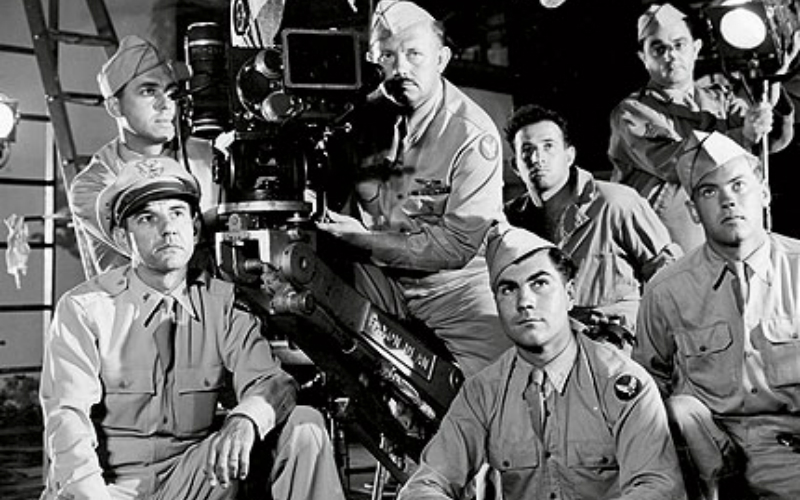(W)Archives: The U.S. Army Unit that was Nominated for an Oscar

The Fourth of July often makes me think of President Ronald Reagan, the modern political master of the patriotic demonstration in the United States. Also, the holiday is meant to be a day of unity in the United States — the one day set aside to celebrate our nation in its entirety. Accordingly, today’s historical piece is a World War II-era training film entitled “Fighter Combat Formation: Attacks and Escort” that starred Reagan and is available on YouTube.
In the film, Reagan plays a fighter ace with ten kills who is ordered to Army Air Forces headquarters in Washington to serve as a trainer. He is tasked with instructing a classroom of green pilots. Appropriately, given the era and the character’s cool, fighter pilot persona, he does so with cigarette in hand. He advises his students to be fully suited up while on alert. Then he launches into discussions of combat formations for fighter plans. He explains how the V formation uses up too much of the pilots’ attention staying in formation. Instead, he directs use of a line abreast formation. Then follows a fascinating discussion of how this formation can be used to defend against enemy fighters and to attack enemy bomber formations. “Fighter Combat Formation” is an example of the power of film, combining Reagan’s charisma with animation that neatly illustrates a topic that is hard to convey in text or static images.
This film, and many others during the war, was made by the First Motion Picture Unit, U.S. Army Air Forces, one of the more unusual units in American military history. This outfit had its beginning with Gen. Hap Arnold, who asked Jack Warner of Warner Brothers fame to create a unit to make recruitment and training films. Warner agreed but asked for a commission as a general. Instead, he got the rank of lieutenant colonel and command of the unit until it was fully up and running.
With a war on everyone was eager to chip in so the unit had all the resources it needed, including 78,000 square feet of studio space leased from film legend Hal Roach for one dollar. The unit attracted many volunteers from all parts of the film industry and Arnold saw that these specialists got funneled to his special unit. The First Motion Picture Unit’s first film starred Jimmy Stewart, a bona fide pilot. The unit attracted lots of other talent, too, most of whom got only $50 a week for their work. Ronald Reagan, a second lieutenant cavalry officer in the reserves, transferred to the Army Air Forces so he could serve in the unit. Because he was a popular figure in Hollywood he was named as personnel officer. Other luminaries to serve in the unit in on-screen roles included William Holden, Clark Gable, DeForest Kelly and Alan Ladd. George Montgomery, a star of B-grade westerns drove a bus for the unit between the barracks where many of its members lived and the studios. Others behind the scenes included Rudolf Ising, the co-creator of the Looney Tunes cartoons, who headed the animation department. One of Ising’s subordinates was Frank Thomas, who had animated the dwarves in Snow White. Bill Scott, who after the war would be the voice of Bullwinkle, Dudley Do-Right and Mr. Peabody, also worked in the unit. There were many others. All of this talent, both on and off screen, actually earned two of the unit’s films nominations for Academy Awards. (There may have been a wee bit of self-congratulation at work on the part of the Academy.)
It is hard to imagine such a thing happening today. Vietnam, Watergate, Iran-Contra, Iraq, Edward Snowden and many other things have irrevocably changed this country. Now, much of American society — Hollywood’s glitterati not least — is divorced from the military. This Fourth of July I’m going to think about the less cynical era in which Reagan and the First Motion Picture Unit made “Fighter Combat Formation.”
Mark Stout is a Senior Editor at War on the Rocks. He is the Director of the MA Program in Global Security Studies and the Graduate Certificate Program in Intelligence at Johns Hopkins University’s School of Arts and Sciences in Washington, D.C.

